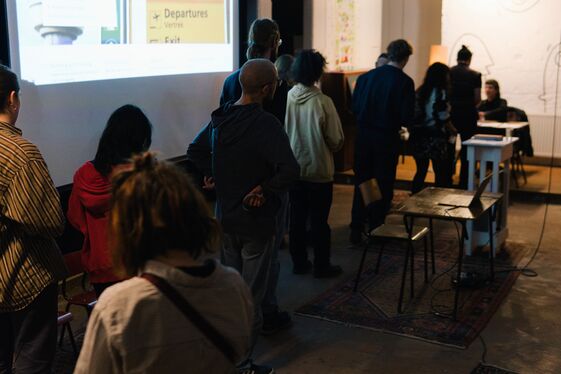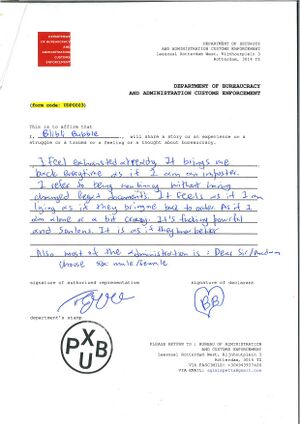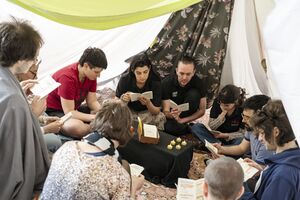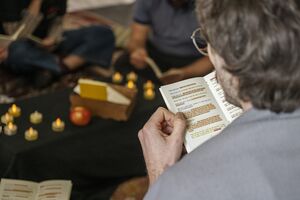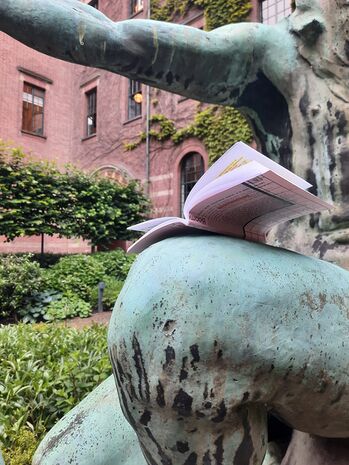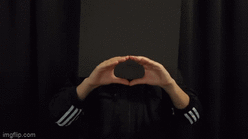User:Aglaia/Final assessment: Difference between revisions
No edit summary |
|||
| Line 50: | Line 50: | ||
How everything started. | How everything started. | ||
mention also the Perec's the art of asking your boss for a raise | |||
and some other important reading and methodology. | |||
==== <span style="color: white; font-family: monospace; text-decoration:none; background-color: green;">'''Thesis: Performing the Bureaucratic (Border)lines '''</span> ==== | ==== <span style="color: white; font-family: monospace; text-decoration:none; background-color: green;">'''Thesis: Performing the Bureaucratic (Border)lines '''</span> ==== | ||
| Line 65: | Line 69: | ||
What is it about? <br> | What is it about? <br> | ||
Why did i make it? <br> | Why did i make it? <br> | ||
How did i make it? <br> | How did i make it? methodology<br> | ||
==== <span style="color: white; font-family: monospace; text-decoration:none; background-color: green;">'''The scenario '''</span> ==== | ==== <span style="color: white; font-family: monospace; text-decoration:none; background-color: green;">'''The scenario '''</span> ==== | ||
Revision as of 23:31, 14 June 2024
17.06.2024
🍉
FIRST YEAR IN XPUB
SI 19 - Garden Leeszaal
https://issue.xpub.nl/19/index.html
The SI19 How do we library that? or alternatively Garden Leeszaal was crucial in diving into the structure of libraries as systems of producing knowledge and unpacking classification as a process that (un)names, distinguishes, excludes, displaces, organizes life. It was fruitful for me in order to start understanding the notion of infra-structure. Libraries as complex social infrastructures. From the library to the section to the shelf to the book to the page to the text. The zooming in and zooming out process. The library as a plain text.
During the collective moment in Leeszaal was really moving seeing people literally diving into recycle bins, grab books, tear pages apart, drawing, pen plotting, weaving words together, cutting words, removing words, overwriting, printing, scanning. A whole book made by all of us in the evening. Having them creating the object. Stations, machines, a cloud of cards. A sleeve that warms up THE BOOK.
[img scanned book] [img work-station with Irmak at Leeszaal] [the bins]
SI20 - Console
https://issue.xpub.nl/20/index.html
[the box] [ ] [ ]
SI21 - TTY
https://issue.xpub.nl/21/index.html
During SI21 TTY we messed around and worked with dusty machines like teletype and typewriters. These machines used to be instruments of administrative workforce and a expressing tool for concrete poetry and literature. This emerging workforce, in a large scale made up of women and minorities who were until then excluded from most qualified jobs, used typewriters and administration aesthetics to express themselves, re-organize and underline structural inequalities. This was an inspirational moment within XPUB for starting developing bureaucratic forms as interface of potential personal stories and discourse.
[the box] [ ] [ ]
Methods with Steve-Project that may or may not be made
Life with the XPUB chickens
[bootleg books]
[Chae and Kamo feed us before the thesis submission - April 2024]
SECOND YEAR IN XPUB
Project Proposal and Thesis Outline
How everything started.
mention also the Perec's the art of asking your boss for a raise
and some other important reading and methodology.
Thesis: Performing the Bureaucratic (Border)lines
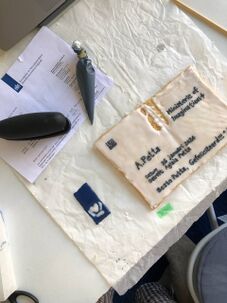
In the first chapter, I touch the concept of borders in relation to migration. I begin with a personal inspection and comprehension of material borders as entities. Alongside, I interweave in the text the concept of hospitality as a cultural attitude towards 'strangers' from the state’s perspective. Conditional and unconditional. How the document I hold in my hands reflects positions on the government’s conditional hospitality and what constraints it dictates.
In the second chapter, I unpack bureaucracy and focus on its bordering function. From migration ghost bureaucracies to the educational bureaucracies of my surroundings to even smaller components of this apparatus. I end up analyzing the document as a unit within this complex network. Through the "interrogation" of the form as an artifact are emerging issues related to language, graphic design and transparency, universality, and underlying violence.
In the third and last chapter, I bridge the written text with the ongoing project that runs simultaneously as part of my graduation work in Experimental Publishing, where I mainly speak through my prototypes.
To change the material artifacts is to transform the context and circumstances for interacting with the words, which inevitably change the meaning of the word itself. This transformation of meaning is especially possible when the words interact with the inscription technologies that produce them” (Hayles, 2002).
Project: Talking Documents
What is it about?
Why did i make it?
How did i make it? methodology
The scenario
Talking Documents in Public
I imagine the theatrical play as a “human microphone”, a low-tech amplification device. A group of people performs the bureaucratic scenario in chorus, out loud, in the corridor of the school’s building, in the main hall, at the square right across, outside of the municipality building. The term is borrowed from the protests of the Occupy Wall Street Movement in 2011. People were gathered around the speaker repeating what the speaker was saying in order to ensure that everyone could hear the announcements during large assemblies. Human bodies became a hack in order to replace the forbidden technology. In New York it is required to ask for permission from authorities to use “amplified sound” in public space
[Title]: “Department of Bureaucracy and Administration Customs Enforcement”
[When]: November 2023
[Where]: Leeszaal
[Who]: XPUB peers, tutors, friends, alumni
[Description]:
I was thinking of queues as a spatial oppressive tool used often by (bureaucratic) authorities. The naturalized image of bodies-in-a-line waiting for “something” to happen at “some point” under the public gaze in an efficiently defined area. Waiting can be considered as a dramaturgical means embedded in bureaucratic procedures that camouflage power relations through the manipulation of people’s time.
[Title]: “Passport Reading Session”
[When]: January 2024
[Where]: XML – XPUB studio
[Who]: Ada, Aglaia, Stephen, Joseph
[Title]: “Postal Address Application Scenario"
[When]: February 2024
[Where]: Room in Wijnhaven Building, 4th floor
[Who]: XPUB 1,2,3, tutors, Leslie
[Description]:
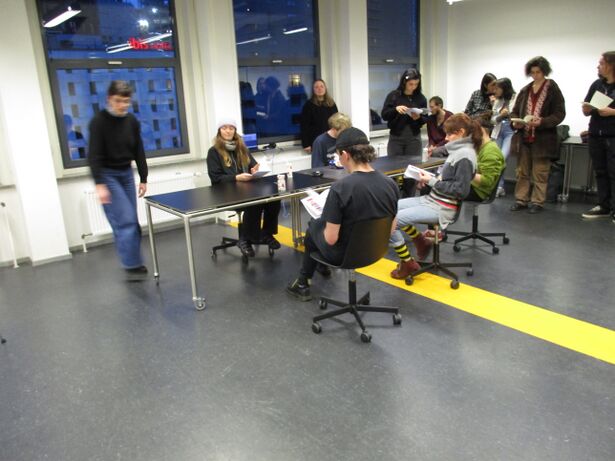
[Title]: “Talking Documents”
[When]: May 2024
[Where]: Art Meets Radical Openness Festival Linz, Austria
[Who]: XPUB, participants and visitors of the festival
[Description]:
[Title]: “Talking Documents”
[When]: May 2024
[Where]: City Hall Rotterdam
[Who]: XPUB, and XPUB friends
[Description]:

The tiny website that holds the vocal archive of the public moments
Graduation Show Plans
-measuring the actual square meters of my documents and the scenario roughly 7.48 m2
-exhibition 2 set of headphone reproducing the 7-act-play, the vocal archive
-one 10’-15’ performance where I plan to curate a new scenario of documents. The new script will be distributed to the visitors and perform it all together at the event day.

